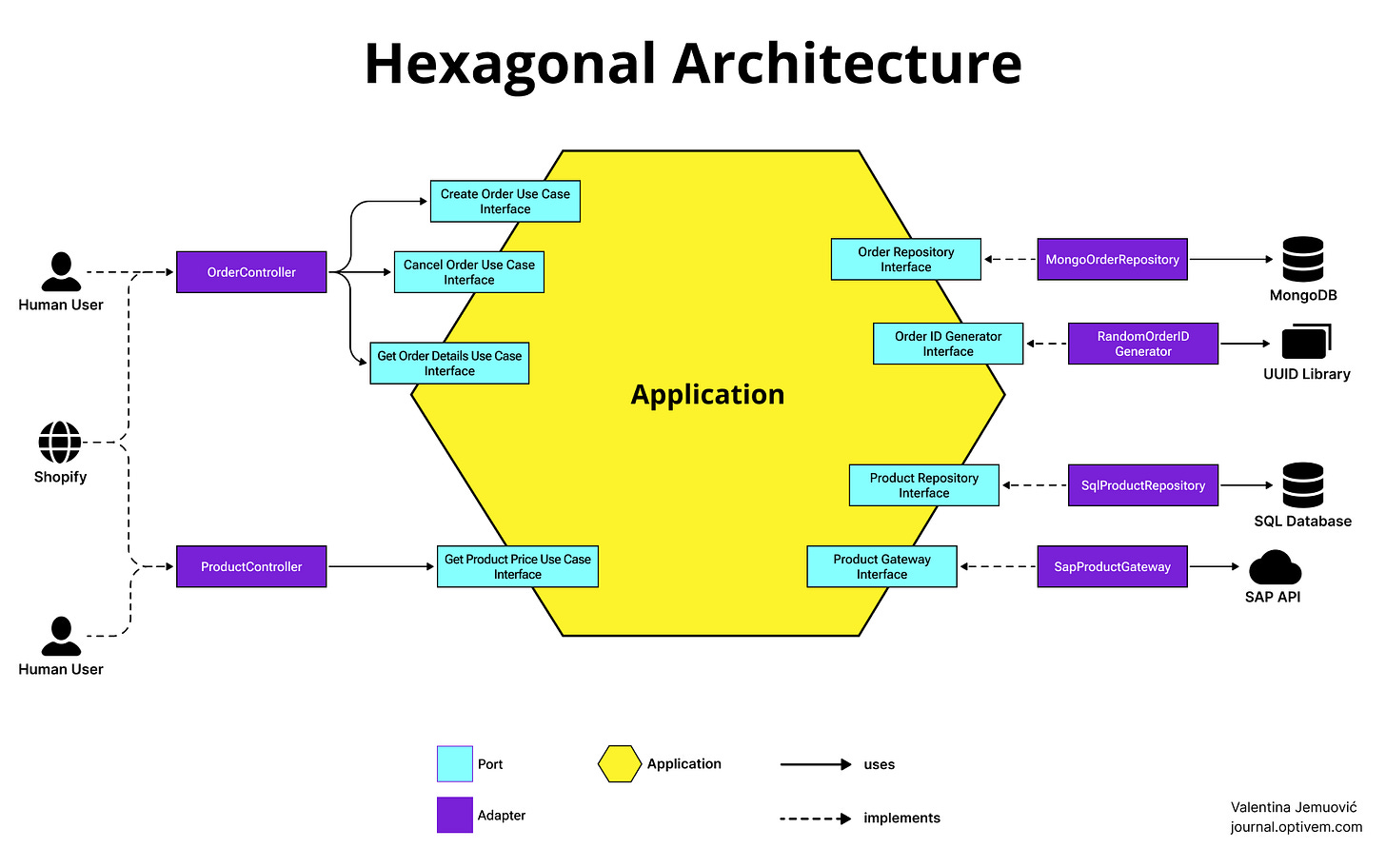Hexagonal Architecture - External World (The "outside")
Our system interacts with the external world through adapters
🚀 Join the ATDD Accelerator waitlist
🔒 Hello, this is Valentina with a premium issue of the Optivem Journal. I help Engineering Leaders & Senior Software Developers apply TDD in Legacy Code.
The Outside of the Hexagon
The “external world” contains all the technologies and systems that surround our core application: databases, APIs, message brokers, user interfaces, etc.
The hexagon acts as a shield - it defines a clear boundary between what’s inside (domain and use cases) and what’s outside (infrastructure and delivery).
The outside world can change - you might switch frameworks, UIs, or databases - without changing the core logic inside the hexagon.
That’s because communication between the two happens only through ports and adapters.
Driving Adapters (User-side API)
On the left side of the hexagon, we have Driving Adapters — these are the entry points that drive the application from the outside.
They present the application in a way suitable for clients, and then call the driving ports (the use cases).
Driving adapters - examples:
A REST API that receives HTTP requests and calls a use case
A Web UI or mobile app interacting with backend services
A command-line or batch process triggering operations
Driving adapters don’t contain business logic. Instead they contain presentation logic:
Receive external input (like an HTTP request or button click)
Convert it into a suitable format (e.g. a DTO)
Call the appropriate use case inside the hexagon
Return the result back to the client
Driving adapters make it possible to expose the same use case in multiple ways — e.g. through a web API, CLI, or message consumer — without duplicating logic.
You can swap out your web framework or migrate from REST to GraphQL without touching your business rules.
Driven Adapters (Server-side API)
On the opposite side of the hexagon, we have Driven Adapters — these implement the driven ports that the application depends on.
If a use case needs to:
Save data to a database
Call an external API
Send an email
Publish an event
…it doesn’t do those things directly. Instead, it talks to a driven port interface, and the driven adapter handles the infrastructure details.
Driven Adapters - examples:
Database Adapter implementing
OrderRepositoryinterface, e.g. by executing SQL queries on an SQL database, or perhaps by using an ORM, etc.Email Adapter implementing
NotificationGatewayinterface, e.g. by using Gmail SDK to send emailsPayment Adapter implementing
PaymentGateway, e.g. by integrating with Stripe or PayPal APIEvent Adapter implementing
PublisherGateway, e.g. by publishing messages to Kafka or RabbitMQ
Driven adapters keep infrastructure concerns separate from business logic.
If your database, API provider, or message broker changes, you only update the adapter — your domain and use cases remain untouched.


